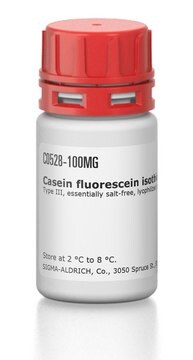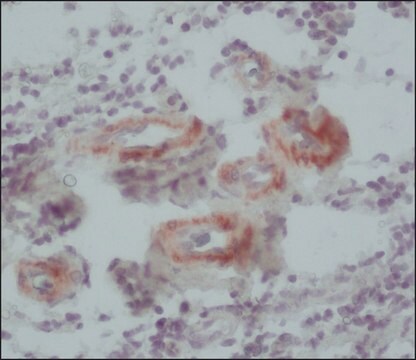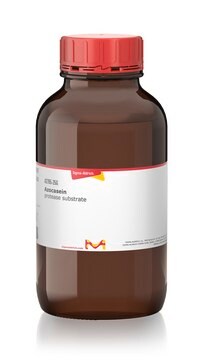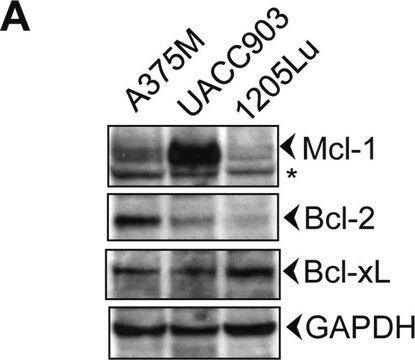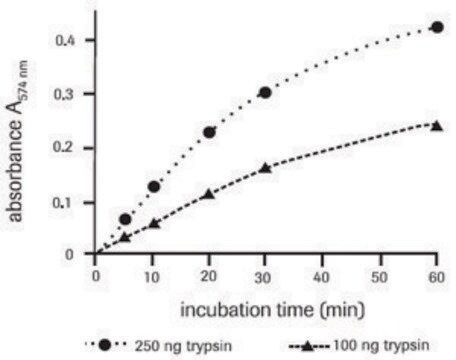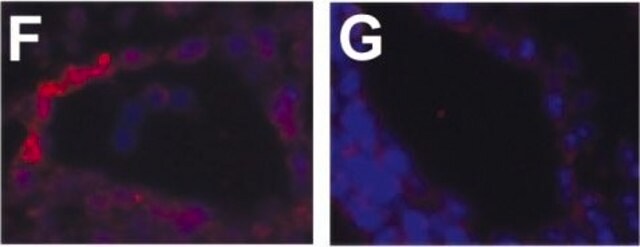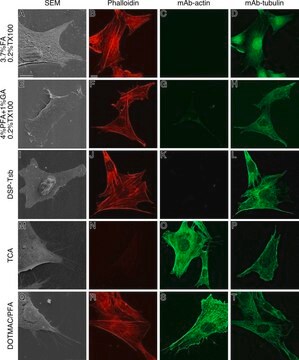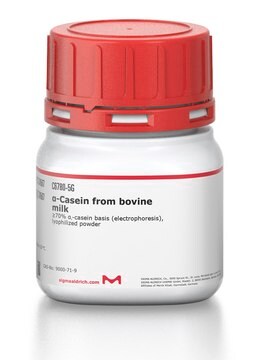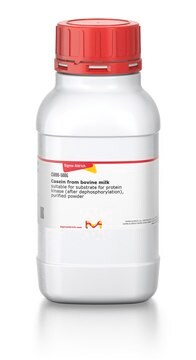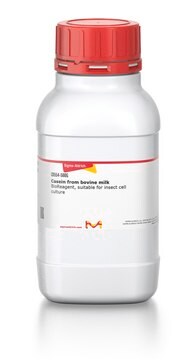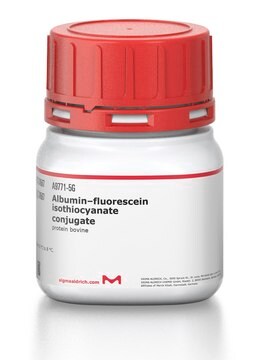C3777
Casein fluorescein isothiocyanate from bovine milk
Type II, essentially salt-free, lyophilized powder
Synonym(e):
FITC-casein
Anmeldenzur Ansicht organisationsspezifischer und vertraglich vereinbarter Preise
Alle Fotos(2)
About This Item
Empfohlene Produkte
Typ
Type II
Form
essentially salt-free, lyophilized powder
Kennzeichnungsgrad
20-50 μg FITC per mg solid
Löslichkeit
water: 5 mg/mL, clear to hazy, yellow to orange
Lagertemp.
2-8°C
Suchen Sie nach ähnlichen Produkten? Aufrufen Leitfaden zum Produktvergleich
Allgemeine Beschreibung
Casein is a major milk phospho-protein and constitutes about 80% of the total protein content in milk. Bovine milk is composed of four types of casein such as, αS1, αS2, β, and κ. Casein exists as micelles in milk.
Anwendung
Casein fluorescein isothiocyanate from bovine milk has been used:
- as a substrate for semi-quantitative analysis of protease in Arabidopsis cells
- to determine the caseinolytic activity of secreted LasB (elastase), alkaline protease and protease IV
- for determining the SpeB (cysteine protease) proteolytic activity in Streptococcus pyogenes cells
highly sensitive protease substrate
Biochem./physiol. Wirkung
Casein micelle system is involved in the prevention of pathological calcification of mammary glands.
Lagerklassenschlüssel
11 - Combustible Solids
WGK
WGK 3
Flammpunkt (°F)
Not applicable
Flammpunkt (°C)
Not applicable
Persönliche Schutzausrüstung
Eyeshields, Gloves, type N95 (US)
Hier finden Sie alle aktuellen Versionen:
Besitzen Sie dieses Produkt bereits?
In der Dokumentenbibliothek finden Sie die Dokumentation zu den Produkten, die Sie kürzlich erworben haben.
Kunden haben sich ebenfalls angesehen
Thomas S Murray et al.
Journal of medical microbiology, 59(Pt 5), 511-520 (2010-01-23)
Pseudomonas aeruginosa is an opportunistic Gram-negative pathogen capable of acutely infecting or persistently colonizing susceptible hosts. P. aeruginosa colonizes surfaces in vitro by either biofilm formation or swarming motility. The choice of behaviour is influenced by the physical properties of
Invited review: Understanding the behavior of caseins in milk concentrates
Corredig M, et al.
Journal of Dairy Science, 102(6), 4772-4782 (2019)
Mark F Mabanglo et al.
Communications biology, 2, 410-410 (2019-11-23)
Bacterial ClpP is a highly conserved, cylindrical, self-compartmentalizing serine protease required for maintaining cellular proteostasis. Small molecule acyldepsipeptides (ADEPs) and activators of self-compartmentalized proteases 1 (ACP1s) cause dysregulation and activation of ClpP, leading to bacterial cell death, highlighting their potential
Hui Gao et al.
Plant physiology, 173(1), 219-239 (2016-11-23)
Aspartic proteases are a class of proteolytic enzymes with conserved aspartate residues, which are implicated in protein processing, maturation, and degradation. Compared with yeast and animals, plants possess a larger aspartic protease family. However, little is known about most of
Michael Maurer et al.
Cell chemical biology, 26(8), 1169-1179 (2019-06-18)
ATP-driven bacterial AAA+ proteases have been recognized as drug targets. They possess an AAA+ protein (e.g., ClpC), which threads substrate proteins into an associated peptidase (e.g., ClpP). ATPase activity and substrate selection of AAA+ proteins are regulated by adapter proteins
Protokolle
Our General Protease Assay Procedures and Substrates overview.
Unser Team von Wissenschaftlern verfügt über Erfahrung in allen Forschungsbereichen einschließlich Life Science, Materialwissenschaften, chemischer Synthese, Chromatographie, Analytik und vielen mehr..
Setzen Sie sich mit dem technischen Dienst in Verbindung.